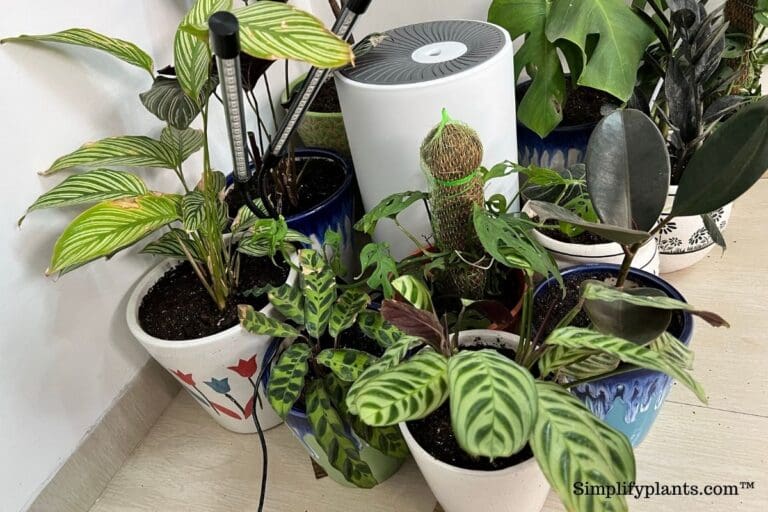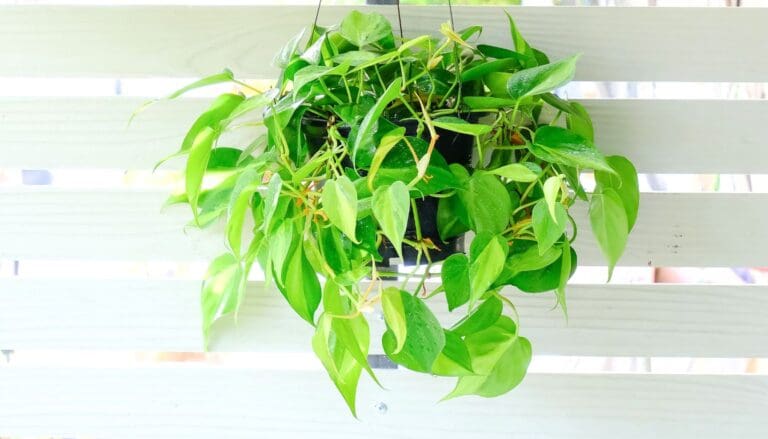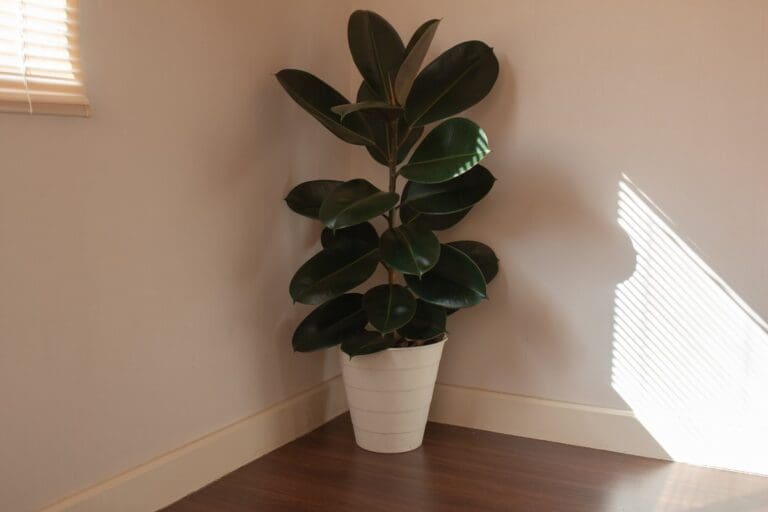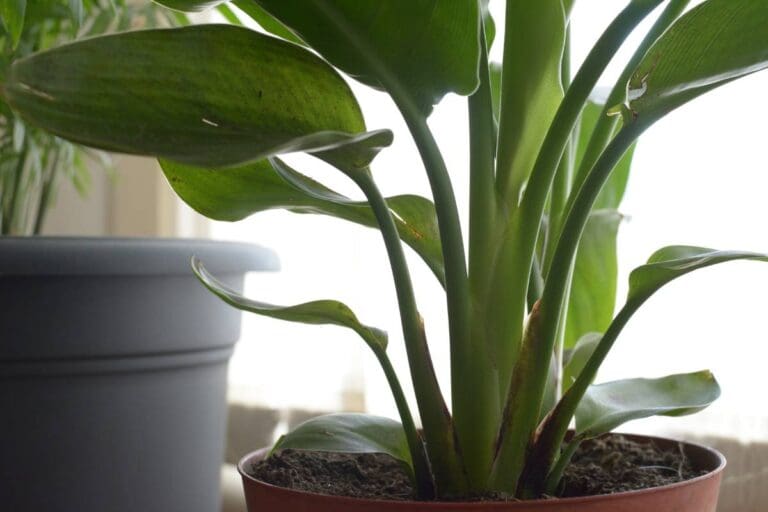9 Ways To Prevent Dry Leaf Tips In Winter
It’s honestly such a letdown to see your plants looking fine at first glance, but then you spot those dry, brown tips once winter sets in.
The air inside just gets so dry, and a few tweaks to your care routine can really help your plants handle the season better.
Turns out, it isn’t just about watering more or less. It’s about finding that sweet spot with moisture, warmth, and airflow.
Once you get why leaf tips dry out, it’s way easier to keep your plants happy indoors.
Please note: Simplify Plants is reader-supported. As an Amazon Associate, I earn from qualifying purchases made by our readers with no extra cost added to you all! Some links in the post are affiliate links and I get a commission from purchases made through links in the post.
1) Increase indoor humidity with a humidifier

I notice my plants start to struggle as soon as the air turns dry in winter. A humidifier adds moisture back into the room, and that really helps stop those annoying brown tips.
I usually keep my humidifier near the plants, but not right up against them. That way, the air stays moist without making the soil a soggy mess.
Letting it run for a few hours a day seems to do the trick. I just set mine to a steady, low level so the air doesn’t bounce between desert-dry and rainforest-damp.
I try to check the water tank often. If you keep it clean and filled, it works better and doesn’t mess with air quality.
When I use a humidifier, I notice the leaves keep their color longer. They stay softer and don’t get those crunchy edges as much.
Honestly, it’s one of the easiest ways to help plants in winter. Doesn’t take much effort, and the plants are way more comfortable.
2) Place water trays near radiators
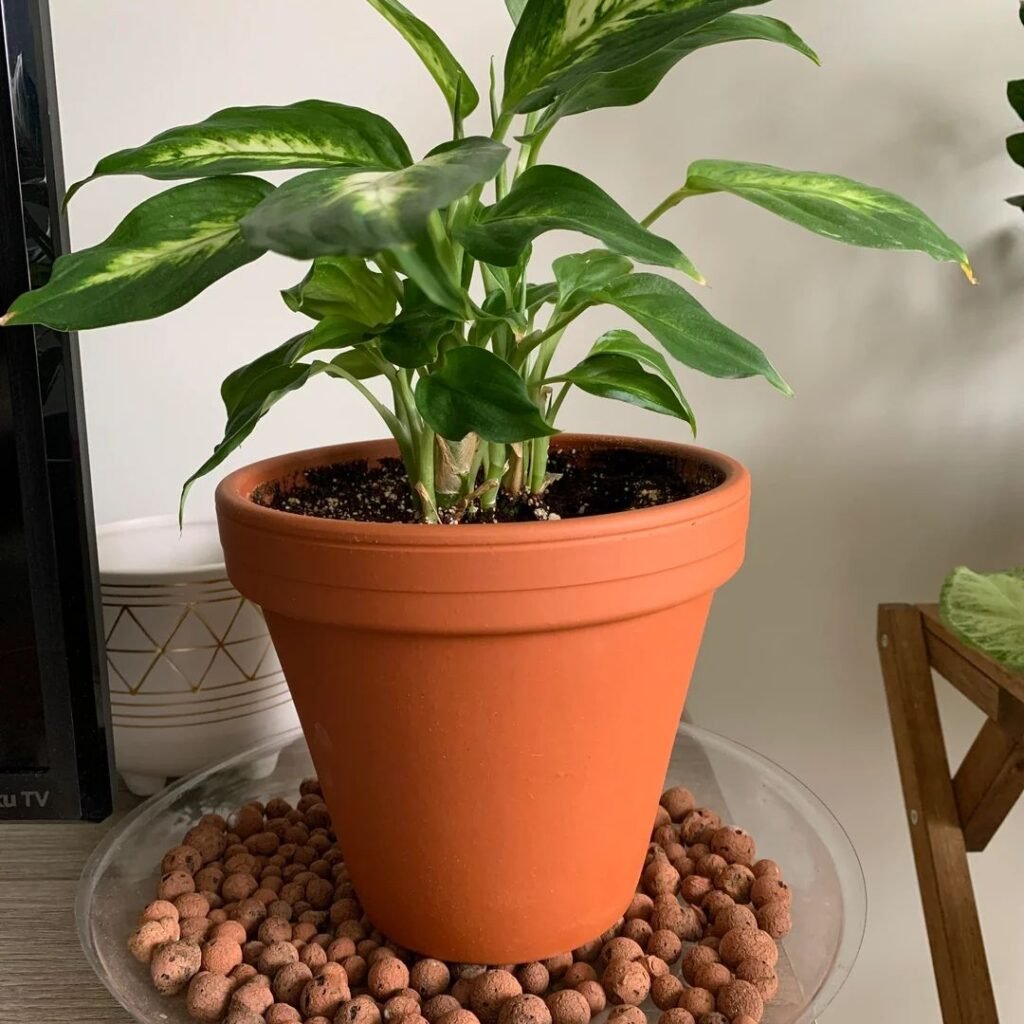
I like to set shallow trays of water near my radiators once it gets cold. The heat makes the water evaporate, adding a little extra moisture to the air.
When the air isn’t so dry, my plants don’t lose as much water through their leaves. That means fewer crispy tips, which is always a win.
I don’t put the trays too close to the plants, though. Direct heat can still stress them out. The goal is just to let the water slowly boost the humidity in the room.
Sometimes I’ll toss a few small stones in the tray. It keeps the water from splashing and just looks tidier.
I check the trays every few days because the water disappears fast when the heat’s on. Keeping them full really does help my plants look better.
3) Use a moisture-retentive potting mix
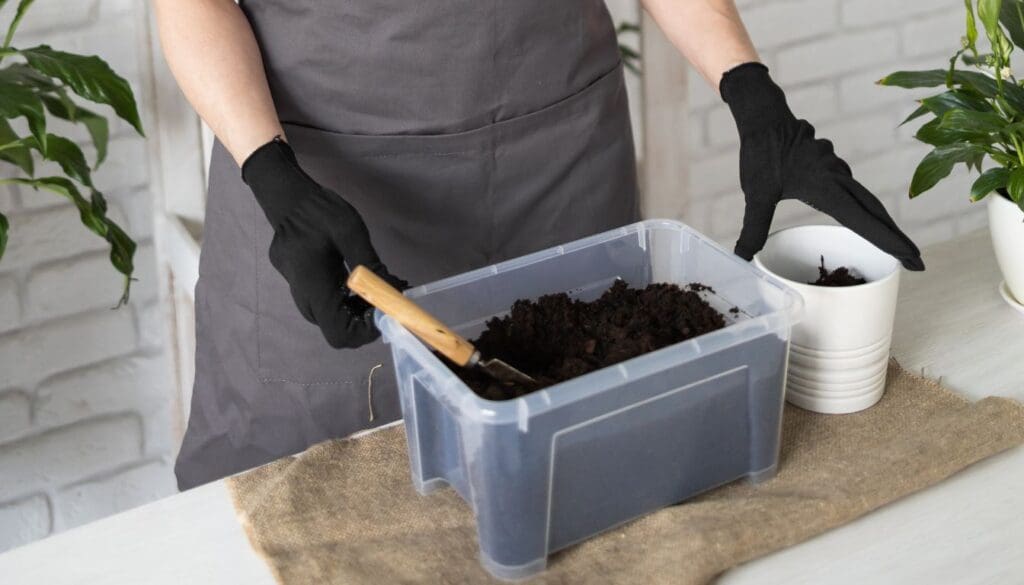
My plants definitely do better in winter when I use a moisture-retentive potting mix. The soil stays damp a bit longer, so roots don’t dry out so quickly. That alone helps keep those leaf tips from turning brown.
I tend to look for mixes with peat moss, coconut coir, or vermiculite. These hold water but don’t make the soil heavy or swampy. Plus, roots still get the air they need.
When I repot, I always make sure the pot has good drainage holes. Even if the mix holds water, I don’t want soggy soil sitting at the bottom. Root rot is just as bad as letting things dry out.
Sometimes, if I only have basic potting soil, I’ll just mix in a bit of perlite or coir. It’s a quick way to improve things for winter.
4) Avoid over-fertilizing during winter
Plants slow down a lot in winter. They just don’t need as much fertilizer as they do when it’s warm and sunny out.
If I overdo it, salts build up in the soil. That buildup dries out leaf tips—definitely not what I want. I’ve learned to go easy or skip feeding until the days get longer.
If I spot yellowing or weak growth, I check light and soil before reaching for fertilizer. Most winter issues are from low light or dry air, not a lack of nutrients.
Being careful with fertilizer gives my plants a better shot at staying green and avoiding those dry, crispy tips.
5) Trim dry leaf tips promptly
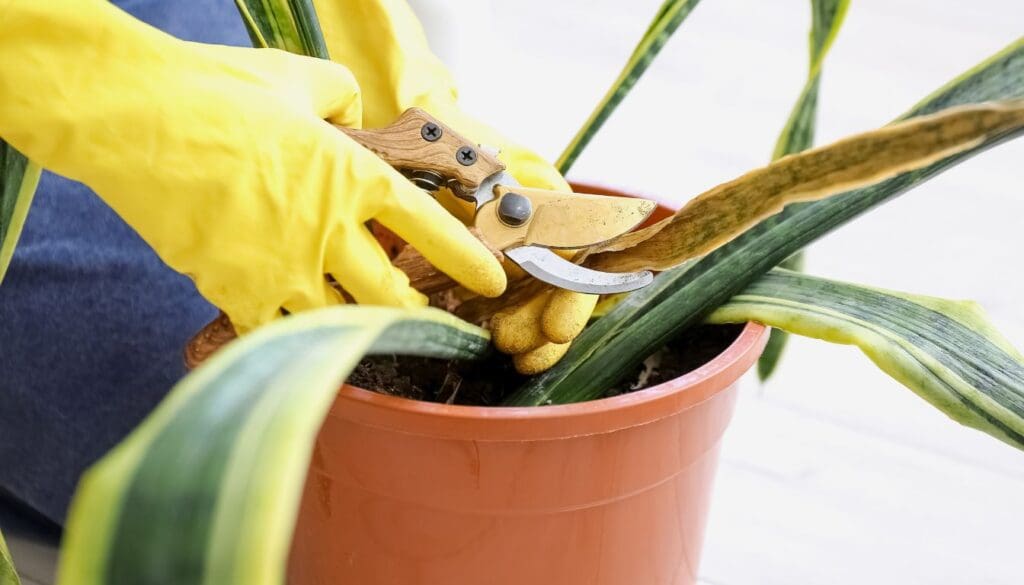
When I spot brown or crispy tips, I trim them right away. Leaving them just makes the plant look worse and sometimes the dryness spreads.
I always use clean, sharp scissors—dull blades just crush the leaf and make it harder for the plant to heal.
I only cut off the dry part, not the healthy green. That way, the plant still looks good and can focus on new growth.
If the brown tip is big, I’ll trim at an angle to follow the leaf’s shape. It’s a little thing, but it helps the cut blend in.
I wipe my scissors with alcohol before and after. No need to spread germs or pests between plants.
Trimming right away keeps my plants looking fresh and encourages new, healthy growth. It’s quick and makes a noticeable difference in winter.
6) Keep plants away from cold drafts
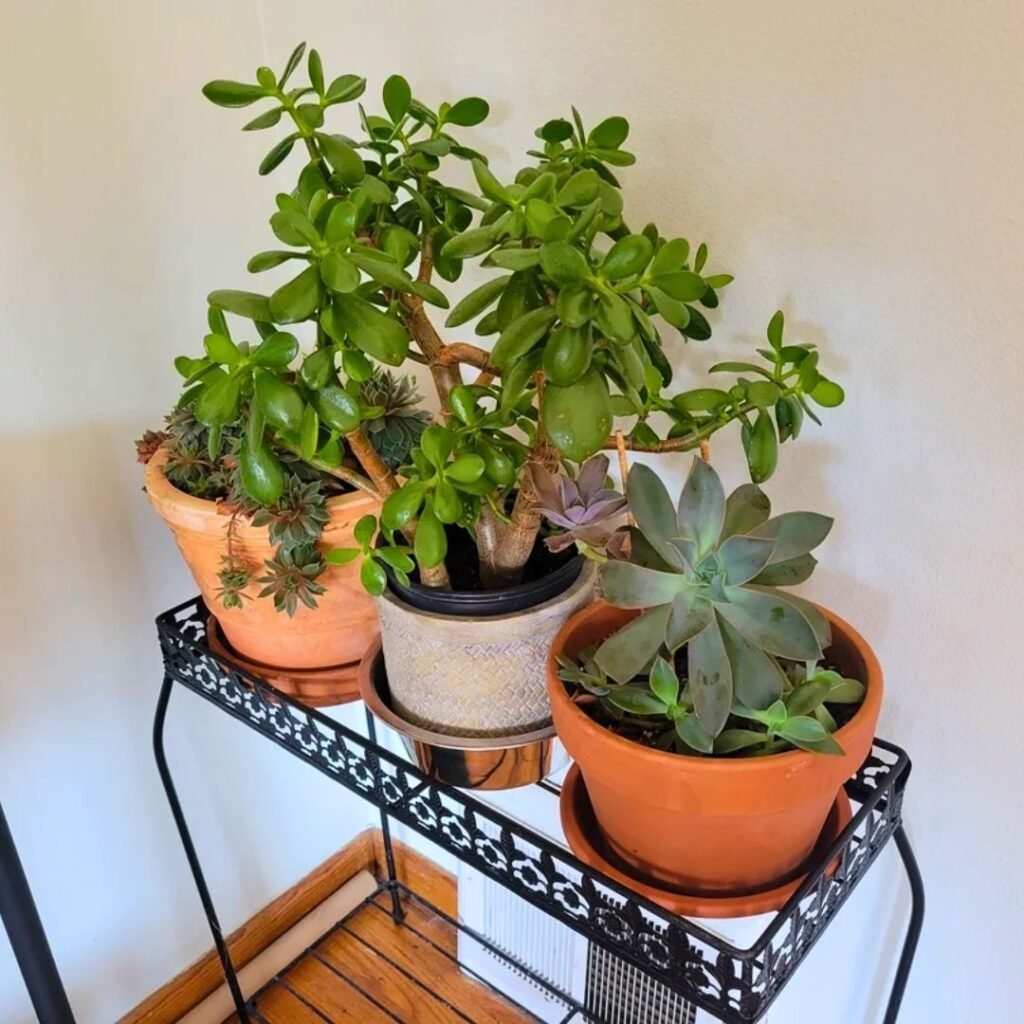
I’m always careful not to leave my plants near drafty windows or doors. Cold air really stresses leaves, and the tips dry out so much faster.
Whenever I open a window in winter, I move my plants back a bit. Even a small draft can drop the temperature around them and do damage.
I also check spots near vents and entryways. Both cold drafts and blasts of hot air from heaters can cause problems. By keeping plants in a stable location, I see way fewer dry tips.
If I can’t move a plant, I’ll use a curtain or even a screen to block the draft. It’s simple, but it helps. A little distance really does matter.
7) Water plants with lukewarm water

I always go for lukewarm water when watering in winter. Cold water can shock roots, and hot water is just a bad idea. Lukewarm feels safe and gentle.
With lukewarm water, the soil soaks up moisture more evenly. That helps keep the leaf tips from drying out, and the plant just seems happier overall.
I check the temperature with my hand—if it’s a little warm but not hot, it’s good to go.
This small habit really makes a difference. I’ve seen way fewer dry tips since switching to lukewarm water.
8) Mist leaves regularly in dry rooms

I’ll mist my plants when the air feels dry, especially in winter. All that heating just sucks the moisture out of the air, and misting gives the leaves a quick humidity boost.
I use a basic spray bottle with clean water. I usually mist in the morning so the leaves have time to dry before night.
Misting isn’t a substitute for real watering, but it helps in dry rooms. I notice my plants look perkier when I keep up with it.
I stay away from electronics and furniture when misting—just a few sprays around the leaves is enough.
When I remember to mist regularly, I really do see fewer brown tips and softer leaves. It only takes a minute.
9) Use a fan to circulate air gently
I like having a small fan running in my plant room. It keeps the air moving so things don’t get too still. Stagnant air seems to make leaf tips dry out faster.
I always set the fan to a low setting. Too much wind stresses plants out and just dries them more. A gentle breeze is all you need.
I’m careful not to point the fan right at the plants. I just want the air to move around the room and keep things balanced.
A fan also stops excess humidity from building up in one spot. That balance helps keep leaves healthier and reduces dryness at the tips.
I usually let the fan run for a few hours a day, especially when the heat’s blasting. It keeps the air from getting too dry and gives my plants a more natural vibe.
Understanding Why Leaf Tips Dry in Winter
I see leaf tips dry out way more once the air gets cold and dry. Most of the time, it’s just the environment and the way indoor heating messes with moisture.
Common Environmental Triggers
Cold weather brings low humidity, so plants lose water faster than they can replace it. When the air’s dry, the tips show stress first.
Temperature swings are another big one. Moving a plant from a warm spot to a drafty window can shock it, and suddenly the leaves just can’t keep up.
Watering habits change in winter, too. I might water less since the soil dries slower, but if I cut back too much, the plant goes thirsty. Too much water is just as bad—roots get damaged, and tips dry out anyway.
Salt buildup from tap water or fertilizer is more obvious in winter. Without enough water to flush it out, salts collect and burn the leaf edges.
How Indoor Heating Impacts Plants
Indoor heating just pulls moisture out of the air. I feel it on my own skin, and plants are no different.
Hot air from vents or radiators blowing right on leaves is rough—they dry out fast and start browning at the tips.
Heating also dries out the top layer of soil quicker. I might think the plant needs more water, but down at the roots, it could still be damp. That uneven watering confuses the plant and adds stress.
Warm, dry air encourages faster evaporation from leaves, and without extra humidity, plants just can’t keep up. The tips are always the first to show it.
Long-Term Plant Care Strategies
I try to stick to habits that keep my plants going strong, even when it’s cold out. Just tweaking how I water and dealing with dry indoor air can really help prevent those annoying crispy leaf tips.
Adjusting Watering Routines
Instead of a strict schedule, I check the soil before grabbing the watering can. In winter, my plants usually want less water since they’re not growing much and the soil stays damp longer.
If I keep watering like it’s summer, I end up with soggy roots—definitely not ideal. I use the finger test: just poke an inch into the soil.
If it feels dry, I’ll water lightly. If not, I give it another day or so. That’s helped me avoid overdoing it.
Good drainage is a must. I always check that water isn’t sitting in trays or saucers, since that’s a recipe for root rot.
For ferns or calatheas, I go with smaller, more frequent drinks. Succulents? I let the soil get bone dry first. Matching the routine to each plant seems to keep those leaf tips happy.
Optimizing Indoor Humidity
Humidity’s a big deal, especially when indoor heating dries things out. Most houseplants like it around 40–60%, but winter air can dip way lower.
It’s honestly one of the biggest reasons I see brown tips on leaves. I usually run a small humidifier nearby to keep things steady.
If I don’t have one, I’ll cluster my plants so they share a little moisture. It’s not perfect, but it helps.
Sometimes I set a tray of water with pebbles under the pots. As the water evaporates, it adds a bit of humidity. The trick is to keep the pots above the water, not sitting in it.
I also try not to put plants too close to vents or radiators, since that hot air just dries everything out and kind of defeats the purpose.
Frequently Asked Questions
In winter, I focus on humidity, watering routines, and light. I keep an eye out for stress signs—like browning tips—and pick plants that don’t mind drier air as much.
What are the top tips for maintaining plant humidity in the winter?
I run a humidifier to keep things comfortable. Sometimes I’ll put water trays near radiators so the steam bumps up the humidity a bit.
How can I tell if my indoor plants are affected by the dry winter air?
Brown or crispy leaf tips are a dead giveaway, and curling leaves are another. If the soil is drying out lightning-fast, that’s a clue too.
What are some effective ways to water plants during colder months to prevent dryness?
I water less often but make sure the soil stays evenly moist. A moisture-retentive potting mix can really help the soil hold onto water longer.
Can you suggest any specific houseplant varieties that are more resistant to dry winter conditions?
Honestly, snake plants, ZZ plants, and pothos are my go-tos for dry air. They’re low-maintenance and don’t need much fussing over humidity.
How often should I mist my plants to keep their leaves from drying out?
I’ll mist lightly a few times a week, but honestly, I don’t count on that alone. Consistent humidity from a humidifier just works better.
What kind of lighting conditions are best for indoor plants to avoid dry leaf tips in winter?
I like to move my plants closer to spots with bright, indirect light during the winter, since the days just get so short. Sometimes, though, even that’s not quite enough.
When natural light just doesn’t cut it, I’ll use a grow light to help them out. It’s not perfect, but honestly, the plants seem to appreciate the extra boost.
Recommended Garden Supplies
| Product Image | Our Recommended Gardening Supplies | Check Offers! |
|---|---|---|
Top Top
Top
Top
Top
Top
Top
Top
Top | rePotme Houseplant and Tropical Classic Potting Soil Mix | Check Offer On Amazon |
 Top
Top
Top
Top
Top
Top
Top
Top | Espoma Organic Indoor Plant Food | Check Offer On Amazon |
 Top
Top
Top
Top
Top
Top
Top
Top | GooingTop LED Grow Light 6000K Full Spectrum Clip Plant Growing Lamp | Check Offer On Amazon |
 Top
Top
Top
Top
Top
Top
Top
Top | Soil Moisture Meter | Check Offer On Amazon |
 Top
Top
Top
Top
Top
Top
Top
Top | Govee Hygrometer Thermometer, Bluetooth Enabled! | Check Offer On Amazon |
 Top
Top | LEVOIT Humidifiers for Large Room(Best For Plants) | Check Offer On Amazon |
 Top
Top
Top
Top
Top
Top
Top
Top | Upgraded DIY Automatic Drip Irrigation Kit, 15 Potted Houseplants Support | Check Offer On Amazon |
 Top
Top
Top
Top
Top
Top
Top
Top | Stainless Steel Heavy Duty Gardening Tool Set | Check Offer On Amazon |
 Top
Top
Top
Top
Top
Top
Top
Top | Bonide Insecticidal Soap | Check Offer On Amazon |
 Top
Top
Top
Top
Top
Top
Top
Top | Bonide 32 oz Spray Neem Oil for Organic Gardening | Check Offer On Amazon |
 Top
Top
Top
Top
Top
Top
Top
Top | Garden Safe Fungicide | Check Offer On Amazon |


